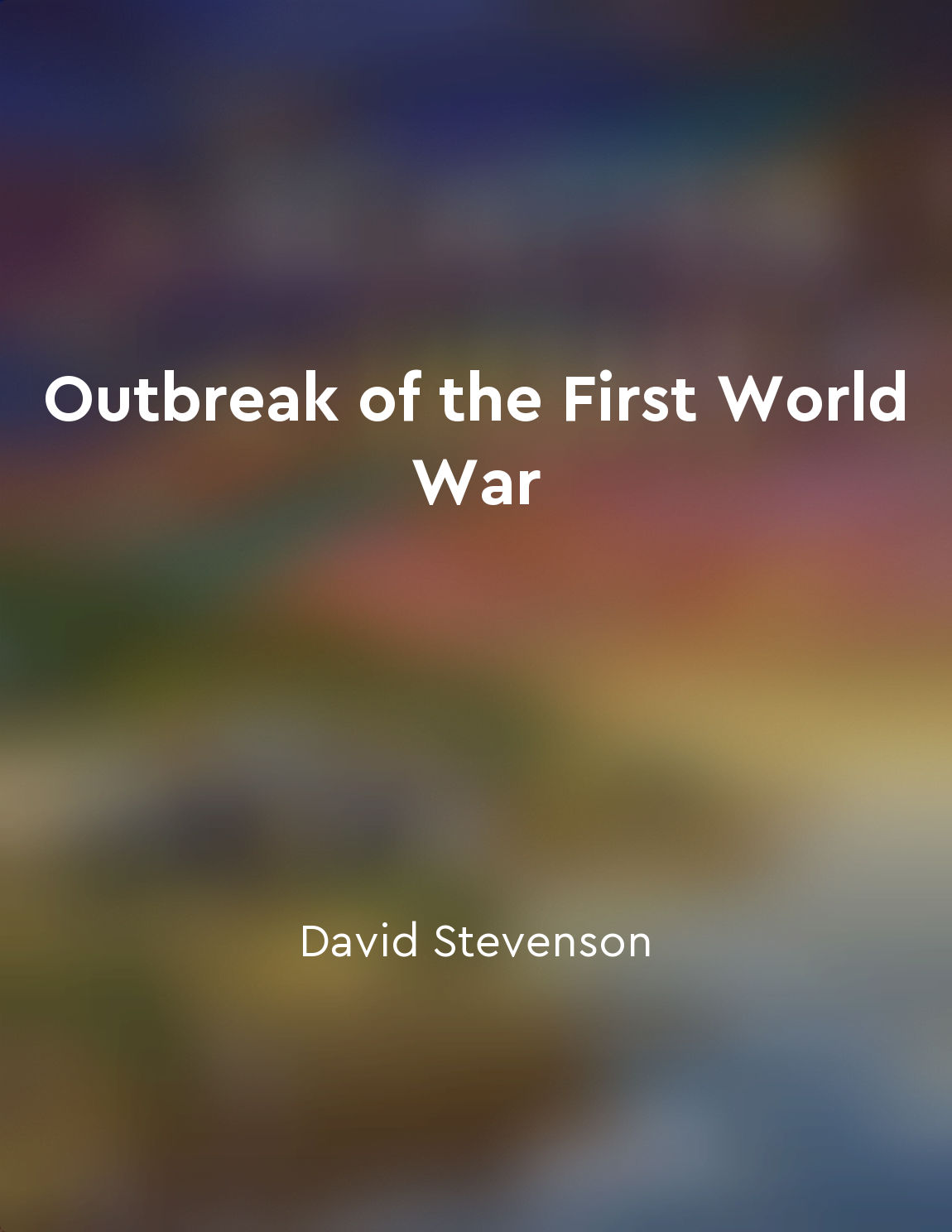World War I from "summary" of Constantinople by Philip Mansel
World War I, also known as the Great War, was a global conflict that lasted from 1914 to 1918. It was a war like no other before it, involving countries from around the world and resulting in millions of casualties. The causes of World War I were complex and multifaceted, including long-standing rivalries between European powers, nationalist aspirations, and imperial ambitions. The war began with the assassination of Archduke Franz Ferdinand of Austria-Hungary in June 1914, which triggered a chain of events that led to the mobilization of armies and the declaration of war. The conflict quickly spread across Europe, with countries forming alliances and joining the fight on either the Allied or Central Powers side. In Constantinople, the capital of the Ottoman Empire, World War I had far-reaching consequences. The Ottoman Empire, which had been in decline for decades, entered the war on the side of the Central Powers in 1914. The decision to join the war would prove to be disastrous for the empire, leading to its eventual collapse and disintegration. The war brought widespread suffering and devastation to Constantinople and its inhabitants. The city became a hub for refugees fleeing the fighting in other parts of the empire, leading to overcrowding and shortages of food and other essential supplies. The war also disrupted trade and commerce, further exacerbating the city's hardships. As the war dragged on, Constantinople became increasingly isolated from the outside world. Blockades and naval bombardments by the Allied Powers cut off supply routes and caused widespread destruction in the city. The war also sparked nationalist movements and uprisings within the empire, further weakening the Ottoman government's hold on power. By the time the war finally ended in 1918, Constantinople and the Ottoman Empire were in ruins. The city had suffered greatly during the conflict, and its once-great empire had been reduced to a shadow of its former self. The legacy of World War I would continue to shape the region for decades to come, leading to the eventual collapse of the Ottoman Empire and the redrawing of borders in the Middle East.Similar Posts
The July Crisis pushed Europe to the brink of war
In the scorching summer of 1914, Europe was on the precipice of a catastrophic conflict. The assassination of Archduke Franz Fe...
The human cost of the war was immense, with millions of lives lost
The toll of the war was beyond reckoning. From the moment the first shot was fired, the machinery of death was set in motion, g...

Stalemates in trench warfare
Trench warfare during the First World War was characterized by a series of stalemates, where neither side was able to make sign...

Europe, Asia, Africa witnessed devastation
The devastation caused by World War Two was felt across the continents of Europe, Asia, and Africa. In Europe, the war brought ...
Trench warfare becomes defining feature
The evolution of warfare during the First World War was marked by the emergence of trench warfare as a defining feature. This m...
Misunderstandings among world powers led to the outbreak of World War I
The misunderstandings among world powers in the early 20th century were like a tangled web of conflicting interests and ambitio...

The American Revolution benefited the elite class
The American Revolution is often portrayed as a noble struggle for freedom and democracy, a fight against oppressive British ru...
Treaty of Versailles imposes harsh terms on Germany
The Treaty of Versailles, signed in June 1919, was intended to bring an end to the First World War and ensure lasting peace in ...

